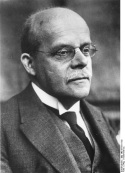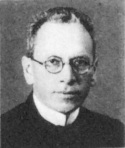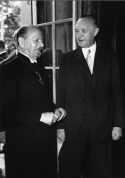Wilhelm Marx
1863-1946
- Member of the National Assembly and the Reichstag
- Head of the Center Party’s parliamentary group
- Chairman of the Center Party
- Reichskanzler from 1923 to 1924 and 1926 to 1928
- Minister-President of Prussia from February to March 1925
A jurist, Marx’s political career started during the Kaiserreich. He joined the Center Party and served as a Member of the Reichstag from 1910 to 1918. As an experienced politician, he was elected to the National Assembly and the Reichstag after the November Revolution. At the start of the 1920s, he strongly considered leaving politics. Yet with the Center Party having lost two key leaders - Erzberger and Trimborn - within a short period of time, he decided to continue his political work. He first took on the chairmanship of the party and its parliamentary group. Then, in the crisis-ridden year of 1923, he took on the post of Reichskanzler, remaining in office until 1924. In the 1925 presidential elections, he lost to Paul von Hindenburg in the second round of voting by a very small margin. He served again as Reichskanzler from 1926 to 1928, making him the Weimar Republic’s longest-serving chancellor. He took on a mediating role, promoting dialogue and compromise. This proved decisive in many decision-making processes.






